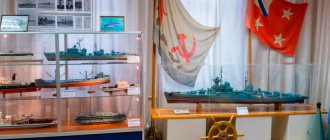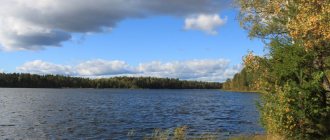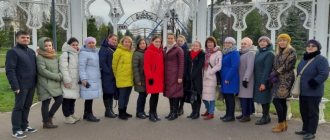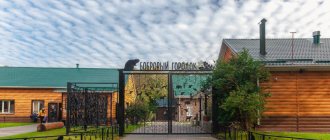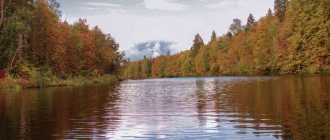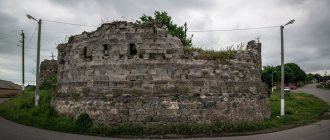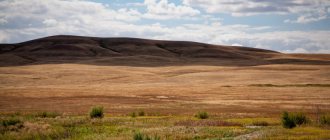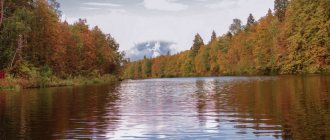Vitebsk is an ancient Eastern European city. It stands at the confluence of two rivers - the Western Dvina and Vitba. He got his name from the latter. Vitebsk is more than a thousand years old - according to urban legend, its founder was Princess Olga.
It became part of the Russian Empire in 1772 after the partition of Poland, and before that it belonged to the Grand Duchy of Lithuania, then to the Polish-Lithuanian Commonwealth. Now Vitebsk is the regional center of the Republic of Belarus.
Today Vitebsk is famous for its arts festival “Slavic Bazaar”. In addition, the city is the birthplace of Marc Chagall, an avant-garde artist.
Many interesting places around Vitebsk and what other cities in Belarus are a must-see: in a large guide to the country.
Vitebsk: what a tourist can see in 1 day
Thanks to some attractions, Vitebsk has become known far beyond the country's borders. It is these that tourists try to explore not in 2, but in 1 day.
House of Marc Chagall
- Address: Pokrovskaya, 11a.
Marc Chagall can easily be called the most famous native of Vitebsk. The future artist's parents were poor, but owned several houses. Of the four buildings, only one brick house has survived to this day, where little Mark’s family lived.
Inside, the furnishings of a typical Jewish house of the late 19th and early 20th centuries are recreated. The reenactors were guided by Chagall’s own illustrations, which he created for his autobiography “My Life.” The building has five rooms: a living room, a red room, a room for Mark and his brother, a kitchen and a grocery store where the mother of the family traded. The museum contains authentic items and unique photographs of the artist.
The opening of the museum attraction took place in 1997 - in honor of the 110th anniversary of the birth of Mark Zakharovich. The Chagall House forms a single complex with an art center where exhibitions of the artist’s works are held.
Summer amphitheater
- Address: ave. Frunze, 13a.
A modern large-scale building is located in the historical center of the city. The first stage was erected here in 1988. Thanks to technological progress, today the amphitheater has the latest equipment. The hall is designed for 6000 people. The famous Vitebsk Bazaar festival is held annually on the stage of the amphitheater.
Estate "Zdravnevo"
- Coordinates on the map: 55.319918, 30.337320.
16 km from Vitebsk is the estate of I.E. Repina. The artist purchased the plot in 1892 with the money received from the painting “Cossacks writing a letter to the Turkish Sultan.” In the summer, the picturesque corner inspired the artist to paint new canvases.
All the manor buildings were wooden and have not survived to this day. In 1988, the estate began to be restored according to the drawings of the owner himself.
Exact copies of the manor's house and the manager's house were placed on the territory. Each building housed a separate exhibition. Among the exhibits are personal belongings of Repin and his relatives, rare photographs, letters and the master’s work supplies.
Square of victory
- Address: pl. Victory.
The largest square in Vitebsk is located on the banks of the Western Dvina. A significant part of it is occupied by a memorial called “Three Bayonets”. In the middle of the complex there is a huge monument in the form of three bayonets connected by a bas-relief. Each bayonet symbolizes the military force that fought against the German invaders:
- army and soldiers
- partisan movement,
- underground resistance.
In front of the monument, at a short distance, there is a sculptural composition of several bronze figures of soldiers carrying the Red Banner. To the side of the memorial, events are held and fountains operate. For the New Year they put up a huge Christmas tree here. The grand opening of the square took place in 1974, a significant year for Vitebsk, when the city celebrated its thousandth anniversary and the 30th anniversary of its liberation from German invaders.
Blagoveshchensky cathedral
- Address: Zamkovaya, 1.
The most ancient temple in Vitebsk, a monument of Polotsk stone architecture, was erected in the distant 12th century. Time and people have treated the magnificent cathedral complex cruelly. The church repeatedly suffered from enemy raids, but each time it was reborn like a phoenix from the ashes.
The destruction during the Great Patriotic War was so serious that at the Nuremberg trials Germany was required to compensate for the damage caused, as well as damage from other Nazi crimes. However, the final, fatal blow to the temple was dealt not by foreign invaders, but by compatriots. During the reign of N.S. Khrushchev's building was blown up to lay tram tracks in its place.
In the 90s, architect G.A. Lavretsky reconstructed the cathedral. The preserved ancient foundation and part of the wall became the basis for the new structure. The ancient masonry was not plastered and painted like the rest of the building. The unusual solution gave the cathedral a special “zest” and attractiveness for tourists.
Dukhovsky roundabout
The Dukhovsky circle is a copy of the stone tower of the Lower Castle complex of buildings, erected by Prince Olgerd in the 14th century. In the 17th century, this building was destroyed and in its place a wooden octagonal tower was erected, which was later called the “Dukhovskaya Kruglik”. It was named after the Oven Church.
The modern tower was built by analogy with the structure of the 14th century. It has 5 levels, where there are exhibitions representing the history of Vitebsk and the Slavic Bazaar art festival. The first exhibition includes what remains of the real 14th-century tower: part of the foundation and elements of the defensive walls.
Dukhovsky roundabout
Green lungs of Vitebsk: parks and gardens
Vitebsk can be called a city of parks. Equipped park areas and lush gardens are wonderful places for a healthy rest.
Botanical Garden
- GPS coordinates: 55.200385, 30.212454.
The picturesque garden on the banks of Vitba is a kind of teaching aid for students of Vitebsk University and a place for walks for ordinary citizens and tourists.
The basis of the botanical garden is a small plot laid out in the distant 18th century. In 1919, thanks to the efforts of an agronomist with the telling surname Sadovsky, a research center for the study of botany appeared on the site. Six acres of land eventually grew to four hectares, on which thousands of plants were planted.
The territory of the Botanical Garden is open to everyone. There is a greenhouse in the garden where you can admire exotic plants and purchase seedlings.
Winners Park
- Address: Kalinina, 5.
Victory Park is located a few meters from the square of the same name. Former park named after. Kalinin received a new name in 2010 - in honor of the 65th anniversary of the Great Victory. At the same time, an exhibition of military equipment from the Great Patriotic War appeared in the park, which became the most interesting attraction of Vitebsk.
Pobediteley Park is a popular place for family walks. The paths here are lined with red tiles, and there are benches for rest everywhere. The park has rides, a parachute tower, fountains and a cafe. The area has been made accessible to disabled people and the elderly: ramps and railings are equipped on the slopes next to the steps.
Park named after Frunze
- Address: Lenina, 35a.
The former bishop's garden became accessible to ordinary citizens only during Soviet times. In 1926, the new park received the name of the famous Russian revolutionary. On the territory there are paths, stone stairs and a fountain, and attractions. The park offers a beautiful view of the Vitba River. In the summer, you can rent a boat or catamaran for a boat trip and go on an excursion.
Park "Mazurino"
- Address: Mazurinskaya street.
Another name for the park on the banks of the Western Dvina is “Soviet Army Park”. The green zone near the village of Mazurino began to be developed soon after the end of the war, and a year after the Victory the territory was opened to visitors.
The park has created conditions for active recreation: jogging paths have been laid, and in winter there is space for ski slopes. Folk festivals and festive concerts are held on the open-air summer stage.
Braslav
The city of Braslav , known in written sources since 1065 , is located in the very heart of the lake region of Belarus : only within a radius of 30 km there are three dozen lakes, and the city itself is surrounded on all sides by mirror-like surfaces of water. The largest of the surrounding “pearls” is Lake Drivyaty , the fifth largest in Belarus. You can see this natural beauty from the very center of Braslav, where the ancient settlement of Castle Hill . The city, whose coat of arms depicts the Christian symbol - the eye of God's care, is also famous for its spiritual shrines. Among them is the beautiful Church of the Nativity of the Blessed Virgin Mary (late 19th century), where the miraculous Braslav Icon of the Mother of God - the Queen of the Lakes, intercessor and patroness of the region.
240 km from Vitebsk
A new landmark of the city, noticeable from afar, was the large letters of the name “BRASLA” and the image of the coat of arms on the slope near the shore of Lake Drivyaty. The inscription, illuminated at night, stretches for 15 meters.
Braslav is also interesting for its events: every year the festival of medieval culture “Sword of Bryachislav” , the international festival of traditional culture “Braslav Lightnings” , the music and sports festival and sailing regatta VIVA BRASLAV , the music festival “Living Sky of Braslav” are held here .
Vitebsk museums and theaters
Vitebsk is famous not only for its ancient history, but also for its rich cultural heritage. You can get acquainted with the past and present of the city in local museums, and relax your soul in the theaters.
Museum of Local Lore
- Address: Lenina, 36.
The oldest museum of Vitebsk and all of Belarus was placed in the city hall building. The meeting began in 1868 on the initiative of the Provincial Statistical Committee. The founder of the first museum is collector A.R. Brodovsky, who was subsequently appointed its head.
The main collection, consisting of tens of thousands of items, was preserved even during the most difficult periods of history for the country. During the Great Patriotic War, the museum was evacuated to the rear; after the liberation of Vitebsk, the exhibitions returned to their homeland.
Almost all modern museums in Vitebsk are branches of the Museum of Local Lore. Today, the collections of the complex attraction include more than 200 thousand exhibits, including ancient coins, paintings, tapestries, Christian relics, porcelain and much more.
Art Museum
- Address: Lenina, 32.
Fine arts exhibitions are held in the classical building from the late 19th century. Previously, the district court operated in the architectural monument. The museum's collections contain more than 10 thousand works of art. A significant part of the exhibits consists of works by Belarusian painters and graphic artists, antique dishes, lace and handmade embroidered items. Among the paintings you can find canvases by such world-famous artists as Levitan, Kuindzhi, Repin, Shishkin and Perov.
Dukhovsky roundabout
- Address: Frunze Avenue, 13a/1.
The exhibition center of the city of Vitebsk received its unusual name in honor of the tower at the Olgerd Castle. A high quadrangular tower was built over the foundations of a medieval palace. Fragments of ancient masonry can be seen on the lower level of the center in the basement of the building.
The second level of the center coincides with the first floor of the tower and is dedicated to the history of Vitebsk. The main exhibit is a three-dimensional model showing the city in 1664. The third and fourth levels tell about the famous “Vitebsk Bazaar”. There is an observation deck located right under the roof.
Tram History Museum
- Address: 5th Frunze Street, 7.
At the beginning of the 20th century, Vitebsk was ahead of many settlements in the Russian Empire, and then the USSR, in technical development. It was here in 1898 that the first electric tram for Belarus appeared. Vitebsk became the third city in the entire Empire where an electric tramway began operating.
In 1966, the Vitebsk Tram Museum opened. Now it houses an impressive collection of materials related to the history of electric transport in the city. The exhibits are divided into five sections dedicated to the main milestones in the development of the tram. The museum houses a tram depot full of examples from different periods of history. Some copies have been preserved in working condition.
Theater named after Yakub Kolas
- Address: Zamkovaya, 2.
The Drama Theater began its existence in 1926. During the Great Patriotic War, the troupe was evacuated to the rear, where the actors continued to stage performances. In 1944, the theater received the name of the writer Yakub Kolas, and was later awarded the Stalin Prize. For its high level of professionalism, the drama theater was awarded the title of academic. A classical building decorated with columns was built especially for the theater.
Theater "Lyalka"
- Address: Pushkina, 2.
The Lyalka puppet theater was created in 1985 thanks to the enthusiasm of the actors of the Drama Theater. Within five years, the troupe acquired its own home and an enviable repertoire. The building has a hall for 130 people and a small doll museum. All 30 performances were staged in Belarusian. The theater successfully tours neighboring cities and countries and has won several international awards.
Republican landscape reserve "Yelnya"
One of the largest massifs of ancient raised bogs and glacial lakes is located in the Belarusian Poozerie region . A natural monument with unique flora and fauna has international conservation status: an area important for birds (since 1981), a Ramsar site (2002), a key botanical area (2005). the Yelnya swamp , which has existed for more than 9 thousand years , the area of which is about 20 thousand hectares. In autumn, these places turn into a real “bird paradise”: more than 4 thousand gray cranes and 10 thousand geese stop at the swamp. largest crops of cranberries (white cranes) are also harvested here
You can watch flocks of birds, walk along an eco-trail and feel the quagmire under your feet, and also try unusual dishes and drinks made from cranberries at the annual ecological festival “Cranes and Cranes of the Miyorsk Region” .
Miory district
Architecture of Vitebsk: where to go to take a photo
Time, natural disasters and military operations have not spared the architectural appearance of this city of Belarus. Some architectural monuments were saved from extinction or restored from scratch.
Town Hall
- Address: Lenina, 36.
The first town hall appeared in Vitebsk at the end of the 16th century, when the city was granted Magdeburg Law. Over the next two centuries, the wooden structure was repeatedly burned and rebuilt until a stone structure took its place.
At one time, the building was occupied by the fire service, which is why the town hall received the popular nickname “Calancha”. After numerous reconstructions, the architectural monument lost its original appearance. Today the town hall is a three-story building with a multi-tiered quadrangular tower. On one of the upper tiers there is a clock, above which there is an observation deck.
Since 1924, the Vitebsk Local History Museum has been operating in the town hall. At night, the building is illuminated by numerous floodlights.
Governor's Palace
- Address: Sovetskaya, 18.
Since the 18th century, the rulers of the Vitebsk province lived in a beautiful two-story mansion and other high-born persons periodically stayed. In 1812, Napoleon Bonaparte came to the residence. It was from here that the King of France moved towards Smolensk during the Patriotic War.
At various times, representatives of the Russian imperial family visited the palace: Grand Duke Constantine, son of Paul I, and the future Emperor Alexander II. The famous writer Ivan Lazhechnikov wrote several works at the residence when he was vice-governor.
The building was built in a classical style and decorated with columns. During the Great Patriotic War, only the walls remained of the palace, but a few years later the building was restored. At the moment, the palace serves as the headquarters of the KGB; entry into the premises is strictly prohibited, but this makes its appearance appear in photographs no less often.
Salt warehouses
- Address: Tchaikovsky, 5.
Spacious food storage facilities were built in 1774. Warehouses, or storehouses in other words, were intended for stocks of essential products in case of war. Of the three buildings connected by arches, two have survived.
The storehouse acquired particular relevance during the Second World War. Today it operates in the salt warehouse building. In addition to exhibitions, educational master classes are held at the folk crafts center.
Polotsk
The chronicled history of one of the oldest cities in Eastern Europe begins with its first mention in 862 in the Tale of Bygone Years. Polotsk was a large craft and trade center, through which one of the main routes of the great route “from the Varangians to the Greeks” passed. This is the “cradle” of the Belarusian state and culture, the capital of the first principality, the birthplace of the outstanding Slavic educators Euphrosyne of Polotsk , Francis Skaryna , Simeon of Polotsk . The most ancient city of Belarus carefully preserves its cultural heritage - majestic churches and Orthodox shrines , including the restored Cross of Euphrosyne of Polotsk .
According to scientists, the geographic center of Europe . A memorial sign has been installed here , and each guest can receive a certificate of their stay in this special place.
Vitebsk region
Holy churches and monasteries of Vitebsk
Almost all religious buildings in Vitebsk are Catholic and Orthodox. Many churches of the Russian Orthodox Church previously belonged to either Catholics or Uniates, and therefore are very different from the usual buildings in Orthodoxy.
Holy Spirit Monastery
- Address: Tolstoy, 13.
One of the oldest Orthodox monasteries in Belarus was founded in the 14th century. The storm of history repeatedly raged at the monastery walls, disrupting the regular flow of monastic life.
The sisters were persecuted, the monastery was given to the Uniates, and again returned to the Orthodox. After the Revolution, the Temple of the Holy Spirit fell under a wave of destruction that swept across the territory of the former Empire.
The revival of the monastery began after the collapse of the Soviet Union. The three-story cell building and the Church of the Holy Spirit were rebuilt. The consecration of the new church took place in 2012.
Assumption Cathedral
- Address: Commissioner Krylov, 9.
The background to the appearance of the cathedral is full of incredible events. According to legend, in pagan times the hill on the bank of the Western Dvina, on which the temple now stands, served as a temple. In the Middle Ages, local residents converted to Christianity and built an Orthodox church on a hill. Later, the rulers accepted the Union, but the townspeople rebelled against such a change and destroyed the temple.
In the 18th century, a Basilian monastery grew on the hill. Years later, the community was abolished, and the main church of the monastery was transferred to the Orthodox Church. In 1936, the long-suffering cathedral was blown up.
After the collapse of the USSR, the Church of the Assumption of the Blessed Virgin Mary was rebuilt on the hill. Patriarch Alexy II was present at the laying of the foundation. The new cathedral was built according to the model of its predecessor. The white-walled structure is shaped like a cross and topped with a large gilded dome. Bell towers are located symmetrically on both sides of the entrance. Before services, the area is heard by the ringing of the largest bell in Belarus.
Church of St. Barbarians
- Address: Leningradskaya, 27.
One of the few ancient churches remaining under the jurisdiction of the Roman Catholic Church. The classic Catholic church was built with donations from Anthony Kosov in 1785. The magnificent building is built of red brick in the neo-Romanesque style.
The walls and bell towers are decorated with elegant figured masonry. Initially, the church stood next to the cemetery. Soviet power, and after the war, practically destroyed the architectural monument. At the end of Perestroika, the building was returned to believers and reconstructed.
Church of the Merciful Jesus
- Address: Voinov-Internationalistov, 28.
The main Catholic church of the city was built in 2009. The Cathedral is the youngest and most spacious of the Vitebsk churches. The huge building accommodates about 1,500 believers. Adjacent to the church is the two-story building of the Catholic Center. In front of the church there is a monument to John Paul II. The bronze sculpture of the Pope is a gift from Polish Catholics.
Intercession Cathedral
- Address: Shubina, 2.
The cathedral with a complicated history was built in 1814. Initially, the church was the center of a Catholic monastery, but 33 years later the community ceased to exist and the building was given to the Orthodox Church. Ironically, the former Catholic church became one of the main Orthodox cathedrals in the city.
When the Bolsheviks came to power, services in the temple stopped. During the war, the building was damaged by shelling, but was able to survive. In the 80s, reconstruction began, and in 1990, the first divine service was held within the walls of the cathedral. Today the facade of the monastery is decorated with frescoes, and the territory is surrounded by a stone fence.
Resurrection Church
- Address: Suvorova, 2a.
The Church of the Resurrection, built in 1772, largely repeated the fate of the Assumption Cathedral. The building originally belonged to the Uniate Church, but in the mid-19th century it came under the jurisdiction of the Orthodox.
In 1936, the city underwent a massive demolition of religious buildings, which included the Resurrection Church. The new building was built in 2009. Like the original, the building is made in the Vilna Baroque style. The walls of the temple were painted by Vitebsk masters.
Glubokoe
The city of Glubokoe , with more than 600 years of history, is called the “cherry capital” of Belarus. The first gardens appeared here thanks to the breeder Boleslav Lapyr, who brought seedlings from different countries and developed new winter-hardy varieties. Recently, residents revived the cherry orchard , planting 1,414 trees in honor of the city’s birthdate, and founded a distinctive cherry festival . the Trinity Church and the Cathedral of the Nativity of the Blessed Virgin Mary (a former Carmelite church built in 1639-1654), standing opposite the holy Mount Athos . Interestingly, there are five lakes on the territory of Glubokoye.
The list of popular attractions of the city includes a bronze sculpture of a cherry tree , a monument to Baron Munchausen , a square of famous natives of Glubotchina , including the artist Yazep Drozdovich , the founder of the Belarusian theater Ignat Buinitsky , aircraft designer Pavel Sukhoi , writer Vaclav Lastovsky , the father of modern Hebrew Eliezer Ben-Yehuda .
160 km north of Minsk
The most interesting monuments in Vitebsk
The streets of Vitebsk abound with sculptures made of bronze and stone. By exploring local monuments and taking a walk around the city, you can learn about unusual people and important historical figures.
Monuments to Marc Chagall
- Address: Pokrovskaya street.
There are two monuments to Marc Chagall in Vitebsk. The first monument was erected in 1992. The artist is depicted sitting thoughtfully in a chair with a palette in his hand. Hovering above the master is the love and muse of his life - his first wife Bella.
- Address: Putna street.
The second monument stands in the courtyard of the Chagalovs' house. The sculpture “Chagall’s Violin” was created in the master’s unique style: a young man sits on a foal and plays, like a violin, on a miniature Eiffel Tower, at the foot of which stands tiny Vitebsk. Instead of a bow, the artist uses a brush.
Monument to Olgerd
- Address: Tolstoy, 2.
The bronze figure of Prince Olgerd is located in the center of Vitebsk. The gallant man on a noble trotter extended forward his right hand, on which the falcon sits. The pedestal under the sculpture is decorated with bas-reliefs.
The talented Lithuanian ruler played an important role in the development of Vitebsk. It was Olgerd who turned a small territory into a large principality that had influence on neighboring Smolensk, Pskov and Veliky Novgorod. Under the prince, Vitebsk was transformed from a modest settlement into a city; stone castles surrounded by fortress walls grew in place of wooden buildings.
Olgerd led a wise foreign and domestic policy, thanks to which he won more than one victory over foreigners and was able to avoid popular riots.
Monument to Alexander Nevsky
- Address: Millennium Square in Vitebsk.
The sculpture of the blessed prince stands not far from the Annunciation Cathedral. The bronze monument differs from most monuments to the ruler, as it depicts him not as a warrior or monk, but as a family man. The commander is dressed in princely clothes, a child is sitting in his arms, and his wife is standing next to him.
street clown
- Address: Frunze Ave., 11.
An interesting sculptural composition entertains passers-by with its funny appearance. A fat clown with a good-natured face plays a large accordion, a faithful poodle sits next to him and an open wallet with coins lies. The composition is also called “Wandering Musician”. The clown and his pet are a gift to the city from artist Nikolai Chelnokov. The author of wonderful sculptures is Vitebsk master Ivan Kazak.
Vitebsk giant
- Address: Mayakovsky street.
The Belarusian giant, or Gulliver, was called Fyodor Makhnov, a native of the village of Kostyuki, a man of outstanding appearance and destiny. The amazing man was the tallest man in the world, his height was 285 cm.
During his short life, Makhnov managed to work in a German circus, earn a fortune, travel throughout Europe and even meet the Pope. The giant was also successful in family life - he had a wife and children.
The further fate of the Makhnovs was tragic. The head of the family died in 1912 at the age of 34. During the war, the family was poor, suffering from poverty. To save himself from starvation, Fyodor's son was forced to sell his father's skeleton to his teachers at the medical institute. The remains of the record holder were valued at 5,000 rubles.
A few years ago, a monument to Fyodor Makhnov appeared near the city hall. The Wonder Man is depicted in full growth, dressed in an elegant European-style suit, coat and top hat. Nearby there is a granite boulder with a memorial plaque.
Heroes of the Patriotic War
- Address: Sovetskaya street.
The War of 1812 also affected Vitebsk. The city stood on the path of Napoleonic army marching towards Moscow. The French occupied Vitebsk for three months. A hundred years after the liberation from enemy troops, local residents erected a monument to the heroes who defeated the invaders. The monument is a tall granite obelisk with a double-headed eagle on top.
Guides to other cities of Belarus:
- Minsk, Pinsk, Mogilev and Bobruisk,
- Gomel, Orsha, Lida, Baranovichi,
- Grodno, Brest and Polotsk.
Vitebsk is one of the most beautiful corners of Belarus. The brilliant city represents the best of this wonderful country. What’s most interesting is that all the main attractions and interesting places can be seen in 2-3 days, and if you organize an excursion correctly, you will have time to visit them on your own even in one day.
Entertainment
"Slavic Marketplace"
Address: main festival site - st. Frunze, 13a Website: fest-sbv.ru
International Arts Festival. It was first held in 1992. During the collapse of the Soviet Union, it was called upon to revive the community of cultures of the Slavic peoples. The founders were non-profit private organizations from Belarus, Russia and Ukraine.
The main venue of the festival is the summer amphitheater, and the main competition is for pop song performers. Winning the competition is considered a prestigious award.
The XXVIII International Festival “Slavic Bazaar in Vitebsk” will be held from July 9 to July 17, 2021.
Zoo
Address: st. Kupala, 17 Telephone: Opening hours: Tue-Fri 10:00-17:00, Sat, Sun 10:00-18:00 Cost: under 3 years old - 0, from 3 to 12 years old - 3 bel. r., over 12 years old - 4 bel. R.
Located in the city center. Storks and geese roam freely around the area.
There is a Red Book animal of the Republic of Belarus in the zoo - the bison Borka.
Souvenirs
Linen products are brought from the Vitebsk region as souvenirs. The Orsha Flax Mill operates under the Belarusian Flax brand, producing clothing, bed linen, and accessories. Tourists often visit the branded stores of shoe companies Belwest and Marko. Edible souvenirs are brought as gifts - cheeses from Braslav, Postavy, Polotsk, Verhnedvinsk, Lepel. Vitebsk’s “MyaskoVit”, “Vitkon Product”, “Ganna”, “Grandmother’s Delicacies” of the Glubokoye Meat Processing Plant, and “Mara Gurmana” from Gorodok are famous for their meat products. Sweet brands include Vitba and Karavay Pridvinya. Condensed milk and sugared cranberries are brought from Glubokoye. produces cranberries in powdered sugar, in chocolate glaze with coconut and peanuts, sets of sweets, marmalade, jam, syrups from wild and garden cranberries. In every historical center there are souvenirs with emblems of cities and city symbols on stationery, clothing, and accessories. In bookstores you can buy photo albums and postcards with views of your favorite places. And for some, memorable trophies after a successful hunt will be a souvenir from the Vitebsk region.
Berezinsky Biosphere Reserve
The oldest protected area in Belarus is the Berezinsky Biosphere Reserve , founded in 1925. Unique ecosystems attract thousands of tourists here. In 1979, the reserve entered the UNESCO World Network of Biosphere Reserves , since 2005 - included in the International Ecological Network, in 2010 - in the Ramsar List of Wetlands... The protected area occupies over 80 thousand hectares and includes various types of forests and swamps , floodplain meadows, lakes and rivers. More than 2 thousand species of plants grow here (78 from the Red Book of Belarus ), dozens of species of mammals and hundreds of birds live. The Berezinsky Nature Reserve is the only place in Belarus and Europe as a whole where you can see all representatives of the “European five” - bison, bear, lynx, wolf and elk.
A unique project for Belarus is being implemented in the reserve: floating log houses with reed roofs, mounted on pontoons, will appear on Lake Plavno. The interior decor will be made of eco-friendly materials, and the motor drive will allow tourists to easily move along the water surface.
The administrative center of the Berezinsky Biosphere Reserve is the village of Domzheritsy, Lepelsky district
Old city
One of the oldest attractions in Vitebsk dates back to the 17th and 18th centuries. Residential buildings and all kinds of civil institutions remind us of what buildings looked like in those distant times. Although only fragments of the street buildings have been preserved.
Old city
What is included in the architectural zone: Land Bank, Town Hall Square ensemble. Also in this area (along Chekhova Street) you can look at the original Vitebsk houses with a predominant burgundy color. Such an original color of ancient Vitebsk architecture is explained by the special composition of the clay.
- Where it is located : approximately within the boundaries of Tolstoy, Lenin, Suvorov, Krylov and Yanka Kupala streets.
Lepel
Historians still have not come to an agreement on where the name Lepel : the Belarusian words “lepei” (best) or “lyapits” (local potters were famous for their art), the Old Baltic “lepel” meaning “yellow water lilies” (on the reservoirs of the region they really a lot) or linden . The ancient city was founded in the 17th century on the shores of Lake Lepelskoye thanks to the Chancellor of the Grand Duchy of Lithuania Lev Sapieha . The monument to the great political figure was erected opposite the Church of St. Casimir . In 1602, this Catholic parish and temple was founded by Sapega, and in 1857 - 1876. a new building was built. Other attractions of Lepel the wooden church of St. Paraskeva Pyatnitsa, a chapel built in 1900, a synagogue building, and an ancient stone house.
In the central park on the shore of Lake Lepel there is a bronze sculpture of Tsmok , an amazing character in Belarusian mythology, the lord of lakes and swamps. By the way, Lepel became the first city in Belarus to become a member of the European Association of Folklore Groups.
155 km from Minsk and 110 km from Vitebsk
Summer amphitheater
If you have planned a trip to the most interesting places in Belarus and want to bring back not only souvenirs from Minsk and Vitebsk, but also pleasant memories, also visit the summer amphitheater. This is a concert venue designed for an audience of more than 6 thousand, the main stage of the famous “Slavic Bazaar”.
Summer amphitheater
There was once no roof here, but weather conditions are unpredictable and it sometimes rained during events. In this regard, the roof was finally erected in 2007. Inside the complex there is a cafe "Maestro". The Avenue of Stars is located nearby. You can admire the building from the outside at any time, but the door to the middle is open only during events.
- Address: Frunze Avenue, 13 A.
